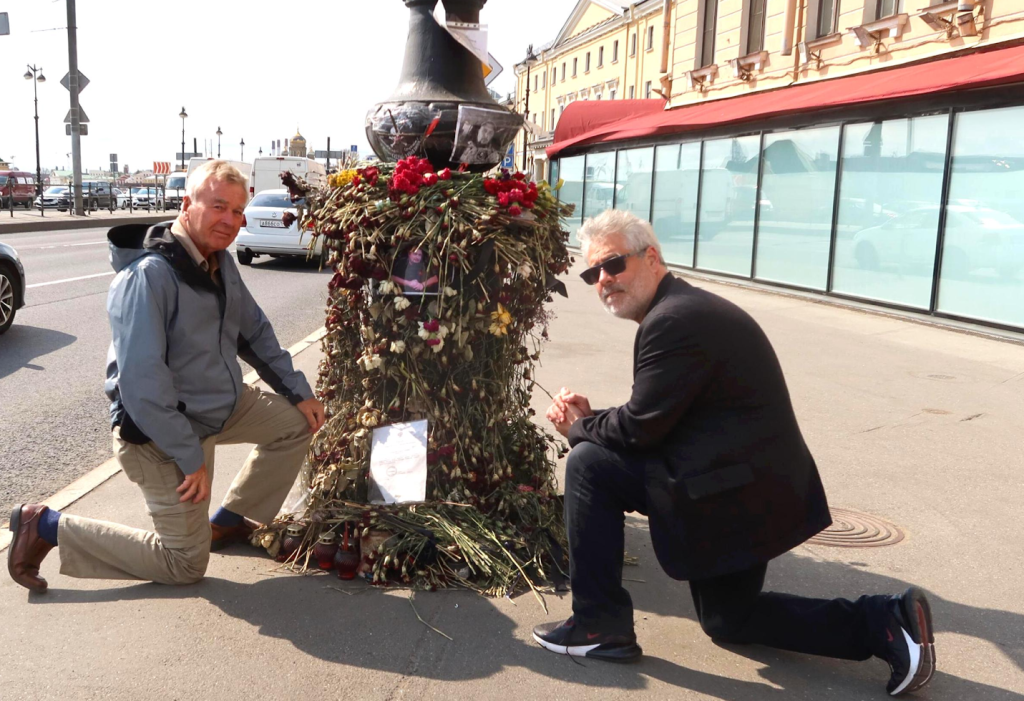
At the end of April of this year, the two of us ventured together to Russia. We went with the purpose of fact-finding and also to make a point that we do not believe that Russia should be isolated from the world through sanctions and travel bans.
At this moment, Russia is more isolated from the West than it has ever been, quite possibly in history. As just one example, while V.I. Lenin was able to famously travel from Finland via train to St. Petersburg, even during the height of WWI, the train from Finland to Russia ceased operating after February 24 of 2022.
And indeed, it was through Finland that we decided to travel to Russia, simply because there are now very limited ways to travel there. Thus, while for years, even during the Cold War, one could easily fly directly from the U.S. to Russia on Aeroflot and other airlines, that is no longer possible due to sanctions.
Now, one can only fly there through Serbia, Turkey or the UAE, but those flights are quite expensive.
And so, we ended up choosing to fly to Helsinki, Finland, and have a Russian friend who has a non-Russian passport (Russians with only Russian passports cannot travel to Finland) drive from St. Petersburg to pick us up. This turned out to be more easily said than done as our friend’s car broke down at the Finnish/Russian border.
And so, we took a very expensive, three-hour cab ride to the border, met up with our friend and crammed ourselves into the cab of a tow truck to drive the remaining three hours to St. Petersburg—a quite inauspicious beginning to our journey.
St. Petersburg (Leningrad)
Our first several days were spent in St. Petersburg, formerly “Leningrad.” We stayed strategically at the Best Western in Uprising Square—so named by the new Bolshevik government in 1918 to commemorate the Great October Revolution of 1917. In the square is located the Moscow train station which we used to great effect during our journey, as well as the Leningrad Hero-City Obelisk.
The obelisk commemorates Leningrad’s designation as one of 13 “hero cities” in the Soviet Union, which distinguished themselves for their exceptional sacrifices in resisting the Nazis during World War II. Two other cities we visited on our trip (Moscow and Sevastopol, Crimea) are also honored with this designation, as is Kyiv, Ukraine, and, of course, Volgograd (formerly “Stalingrad”).
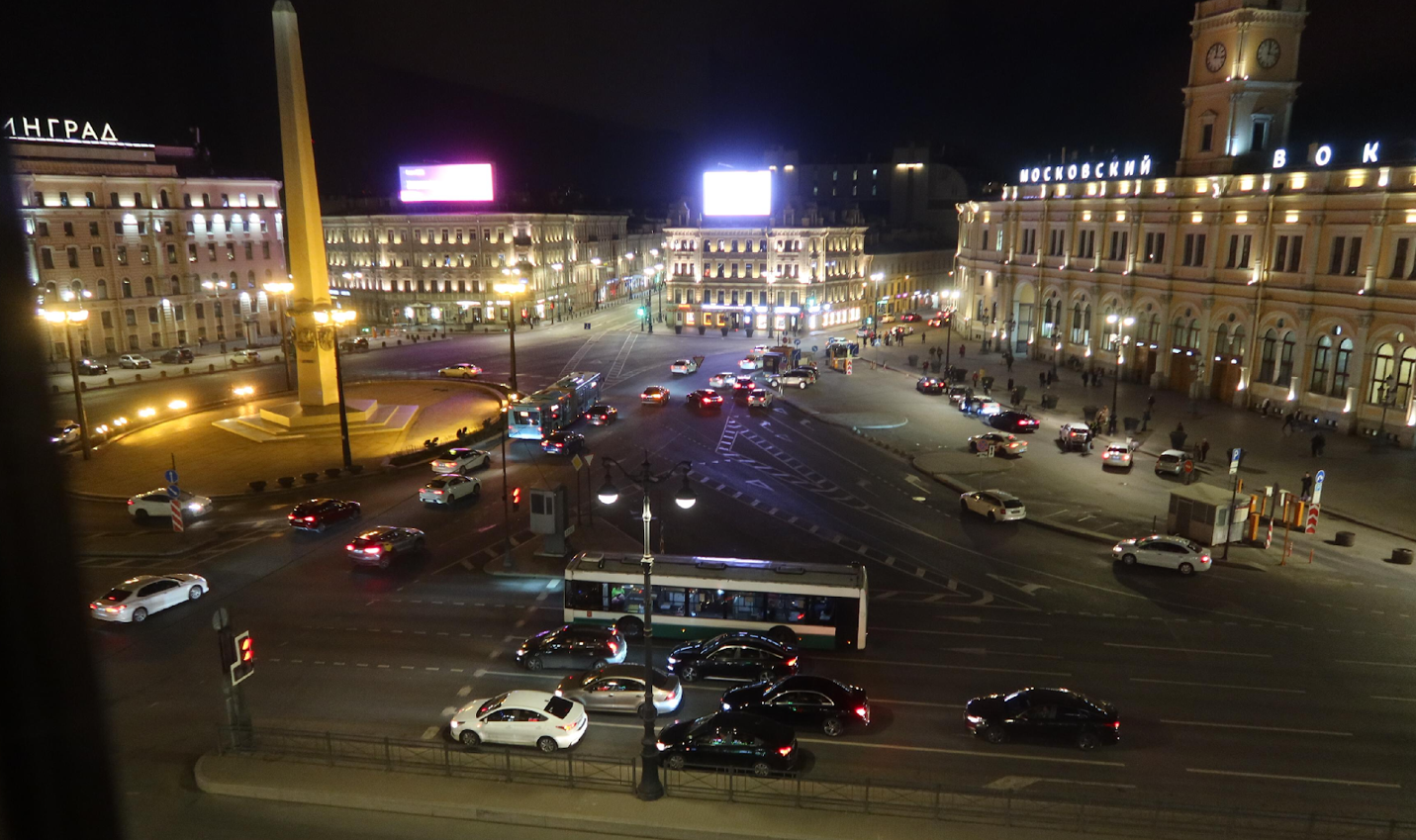
During our stay, the city of St. Petersburg sure seemed more like Leningrad, for it was beginning to be decked out in red flags with hammers and sickles and stars to commemorate both May Day and Victory Day over the Nazis on May 9. Long-time residents told us that the ubiquitous display of such symbols of the USSR was something new (at least since the collapse of the Soviet Union in 1991), and was stimulated by Russia’s Special Military Operation beginning in February 2022.
It appears that the Russian people, and the Russian government as well, are looking to the legacy of the Soviet Union as a source of strength, pride and unity during this time of war—a war that they view, we believe quite rightly, was forced on them.
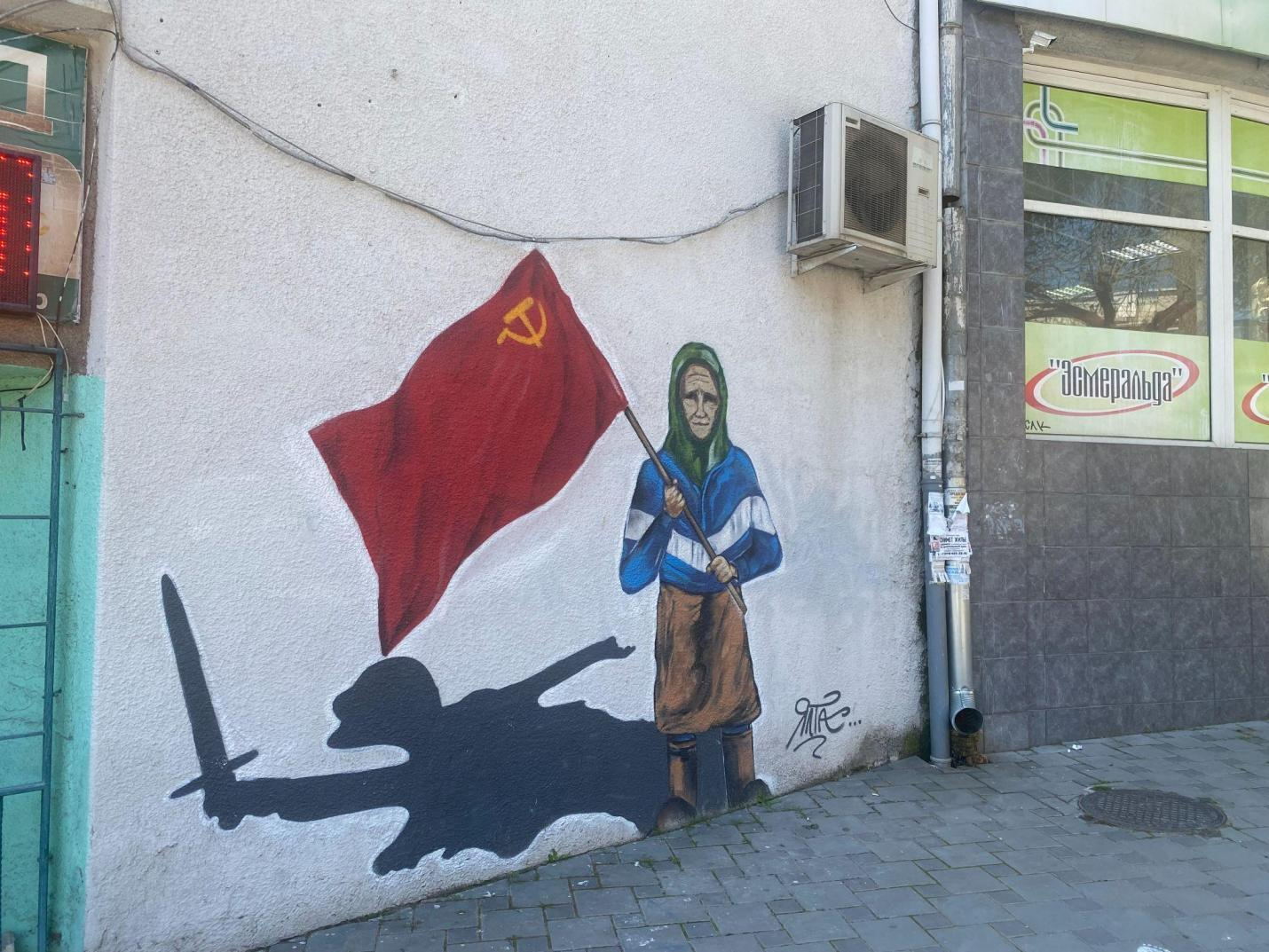
The newly released Russian Federation “concept” on foreign policy states quite explicitly that Russia’s current foreign policy is informed by the two main objectives and successes of the USSR: the defeat of Nazism and global decolonization. Certainly, on paper at least, this belies the claim of some Western leftists that Russia is motivated in its relations with other nations by imperialist concerns.
While in St. Petersburg, we visited the site of the terrorist attack which claimed the life of Russian journalist Vladlen Tatarsky and wounded more than 30 others, at least 10 gravely. The attack involved the bombing of a café in the picturesque University district of St. Petersburg along the Neva—a soft target if there ever was one.
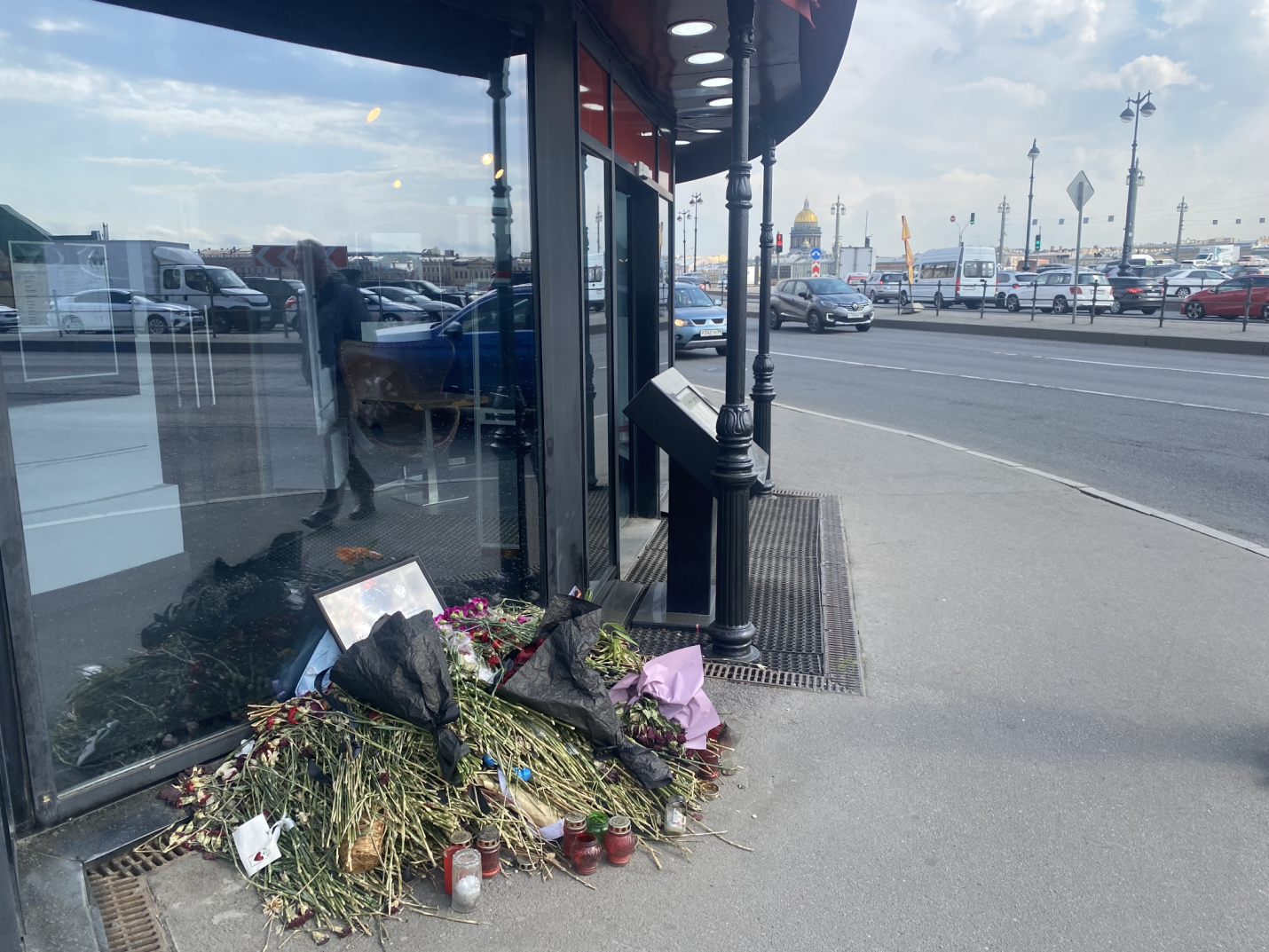
The café remains closed, and three sets of memorials for Tatarsky are set up around it, consisting of flowers and photos. Of course, the Western press has tried to do everything it can to justify this vicious attack upon civilians, writing off Tatarsky as “pro-Kremlin” and “pro-war” (as if the Western press cannot be fairly characterized as “pro-war” and “pro-Pentagon”) and simply glossing over the numerous other civilians wounded in the assault as “collateral damage.”
Moscow
As planned, we left St. Petersburg by train to Moscow after several days. We took the faster “Sapsan” (Falcon) train to Leningrad Station in Moscow (it is still called that). The train ride, reaching 120 mph, was smooth and comfortable.
We sat across from two Russian women, one of whom was quite friendly. She told us of her son who lives in Boston and who, quite sadly for her, she has not seen in years. She kept sliding over hard candy to share with us. And, when she saw Dan nervously biting his nails, she kindly handed him her nail file for him to use. This type of sharing on the train is quite common in Russia, as we would continue to discover during our journey.
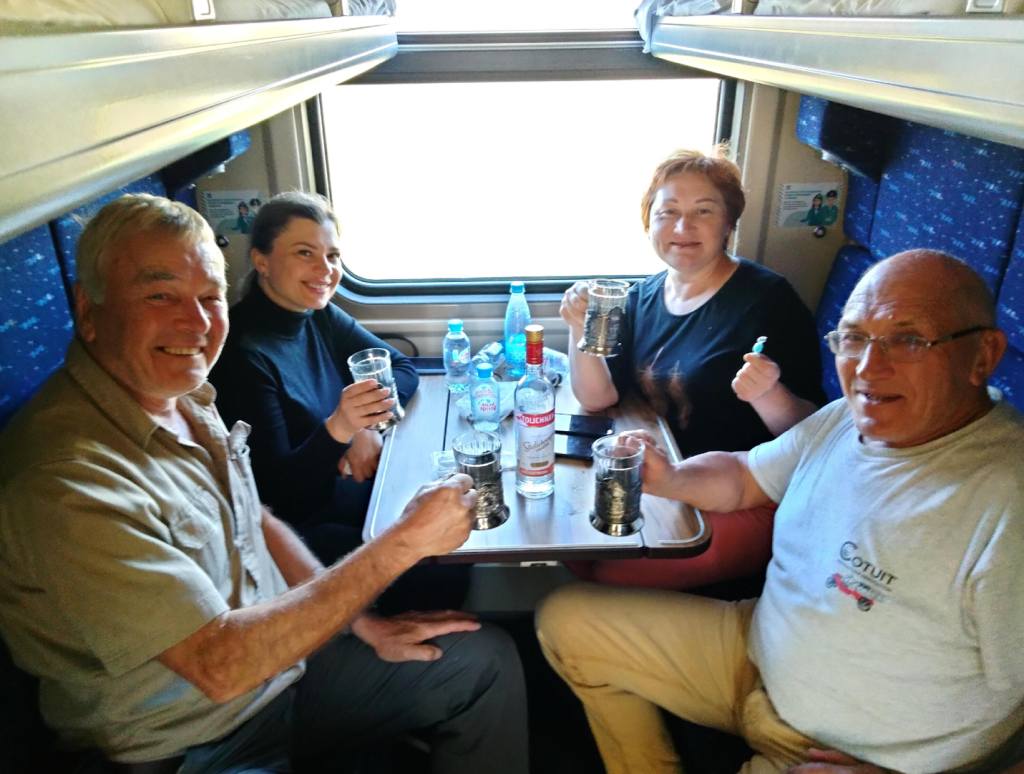
Moscow too was being decorated for the May 9 Victory Day celebration. Red Square was sealed off from the public to prepare for the event, and the city was on high alert for possible terrorist attacks, one of which would come while we were in Russia with the drone attack upon the Kremlin itself. Despite the fears of attack, Muscovites were out on the streets day and night.
Both Moscow and St. Petersburg were incredibly vibrant. Gorky Park was particularly lively, with throngs of families with children enjoying the spring weather, swings and slides. Colorful tulips were in full bloom.
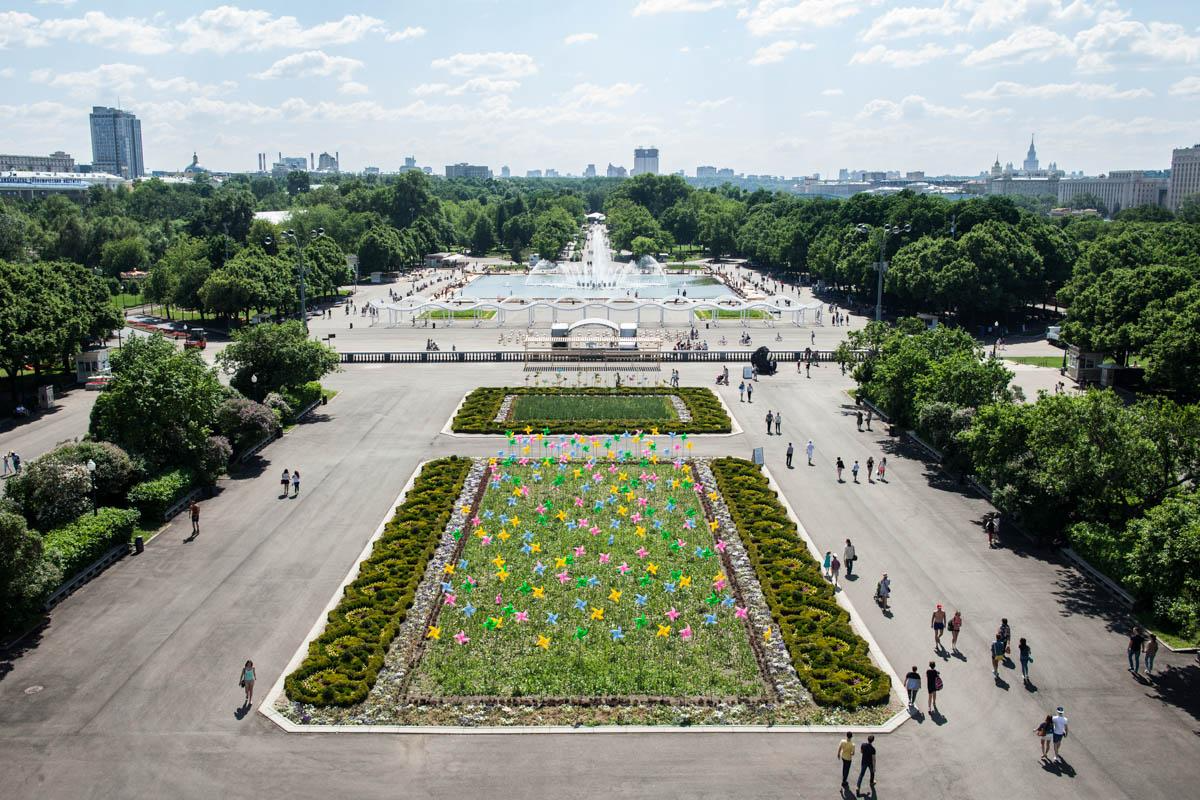
From appearances, Russia largely did not appear to be a country at war. However, everyone we talked to confided to us about their concerns for the war—for the loss of life on both sides, the fact that it was lasting much longer than people had expected, and the danger that the war could expand into a greater conflagration. Some Russians expressed their fear that nuclear weapons would end up being used before this was all over, though they believed that the U.S. would be the first to launch them.
At the same time, the Russians showed their usual stoicism in the face of such dangers, with one family with whom Dan had dinner stating almost matter-of-factly that “Russia has always had difficult times, and it will have them again.”
After several days in Moscow, and our hopes for visiting the Donbas falling through, we took the long, 27-hour train ride to Crimea—a region now fully in the crosshairs of the proxy war.
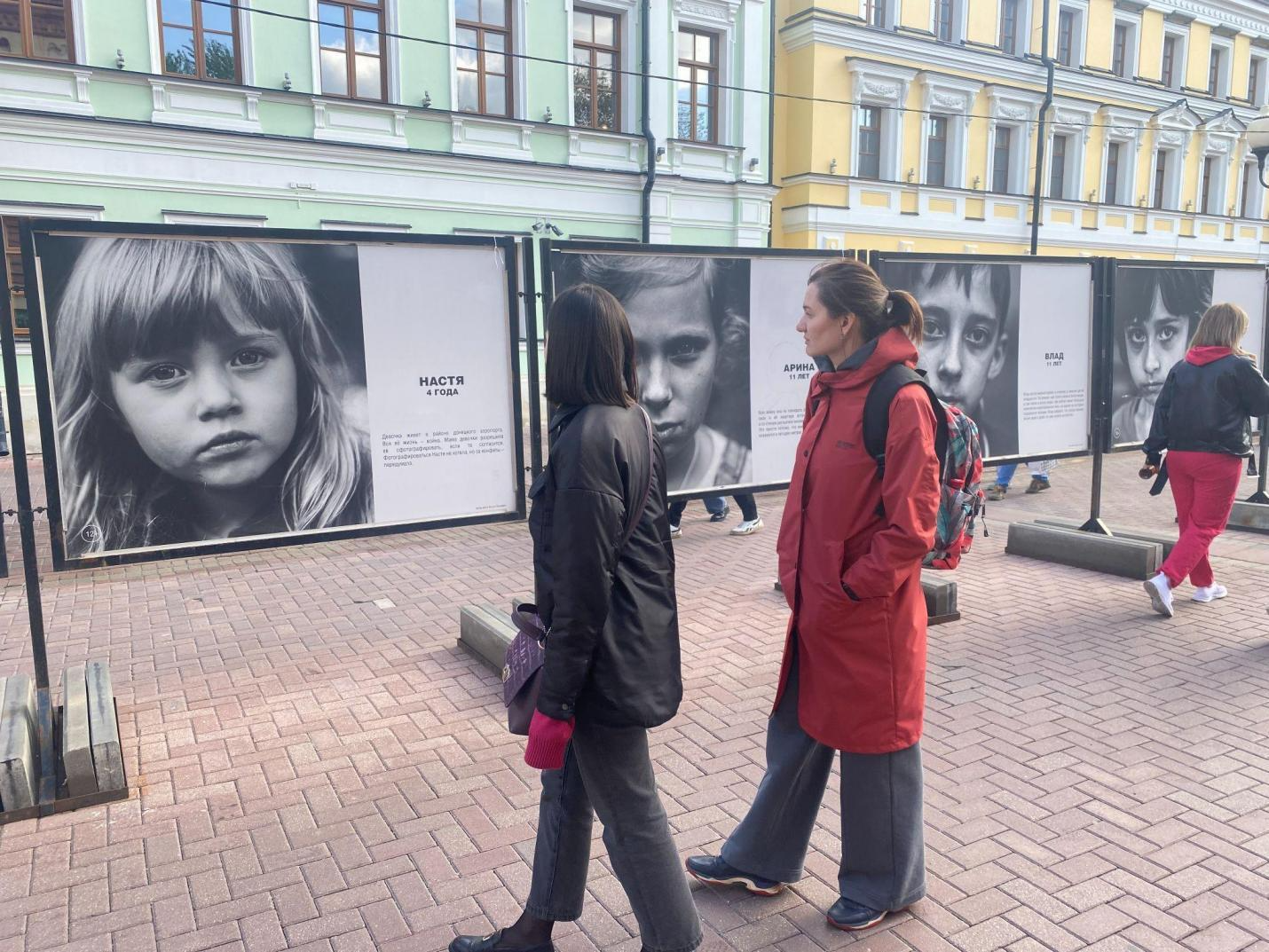
Arriving in Crimea
Ukrainian President Volodymyr Zelensky says he will “take back” Crimea. U.S. leaders Victoria Nuland and Jake Sullivan say they support him. Indeed, Sullivan recently suggested Ukraine is free to use the F-16 fighter jets in attempting to “recapture” Crimea. We traveled to Crimea to see the situation and learn details of how and why Crimea seceded from Ukraine in 2014.
A highlight of the train ride was passing over the new 12-mile-long Kerch Strait Bridge which connects mainland Russia to the Crimean peninsula. As our train approached the bridge, we could see that saboteurs had been active. There was a fuel tank on fire in the near distance. A couple of passengers did not want us to photograph this, probably thinking it gives publicity to the enemy.
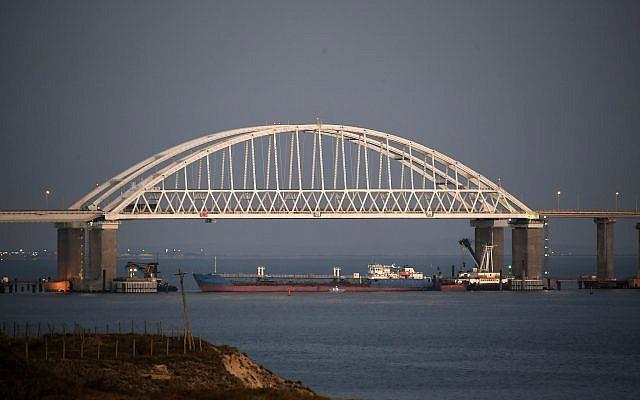
As we departed the train in Crimea at the beautiful station in the capital city, Simferopol, the loudspeakers on the platform greeted us with traditional Russian songs.
We then drove the roughly two hours to Yalta where we stayed while in Crimea. Along our drive, we saw the giant mosque which the Russian government is building along the highway in an area where Tatars, who generally practice the Islamic faith, protested to have land to live and worship. The Tatars had been persecuted during World War II as suspected collaborators and forcibly removed from Crimea to other Soviet republics.
A number of Tatars have moved back to Crimea over the years and now make up about 12% of the population of Crimea. Meanwhile, about 65% of the Crimean population is ethnic Russian and about 15% is Ukrainian, though about 82% of the population overall speaks Russian on a daily basis.
As we were told while in Crimea, one of the first things President Putin did after Crimea returned to Russia in 2014 was to try to make good relations with the Tatar community by “rehabilitating” them from the claims of collaboration made by the Stalin government, giving them the land over which they protested, providing them with modest monetary reparations and building them the new mosque.
Historical Background
All in all, we spent five days seeing the sights and meeting people in Simferopol, Sevastopol and Yalta. We were guided by translator and native Crimean Tanya. In the past, Tanya worked for the U.S. Agency for International Development (USAID), teaching Russian to U.S. Peace Corps volunteers.
Crimea has a rich agricultural sector. It was severely hampered after Ukraine dammed the canal bringing fresh water from the Dnieper River. After Russian forces intervened, they removed the dam and agriculture is once again thriving. Crimean cities are busy with the streets and sidewalks full. In the parks, there are teens skate-boarding and seniors playing chess.
The situation in Crimea is emblematic of the Ukraine crisis overall. In both Crimea and the Donbas (eastern Ukraine), the majority of people are ethnically Russian, their native language is Russian and they voted overwhelmingly for the elected but overthrown President Viktor Yanukovych.
From the 15th century Crimea was part of the Ottoman Empire. It became part of the Russian Empire in 1783 after the army of Catherine the Great defeated the Turks.
In 1921, Crimea became the Crimean Autonomous Soviet Socialist Republic as part of the Russian Soviet Socialist Republic.
In 1954, Soviet Premier Khrushchev designated Crimea to be part of the Ukraine Republic. This was done without consulting the Crimean people but it was not a major change since they were all part of one country, the Soviet Union. As we were told in Crimea, “Nobody could imagine the Soviet Union breaking up.”
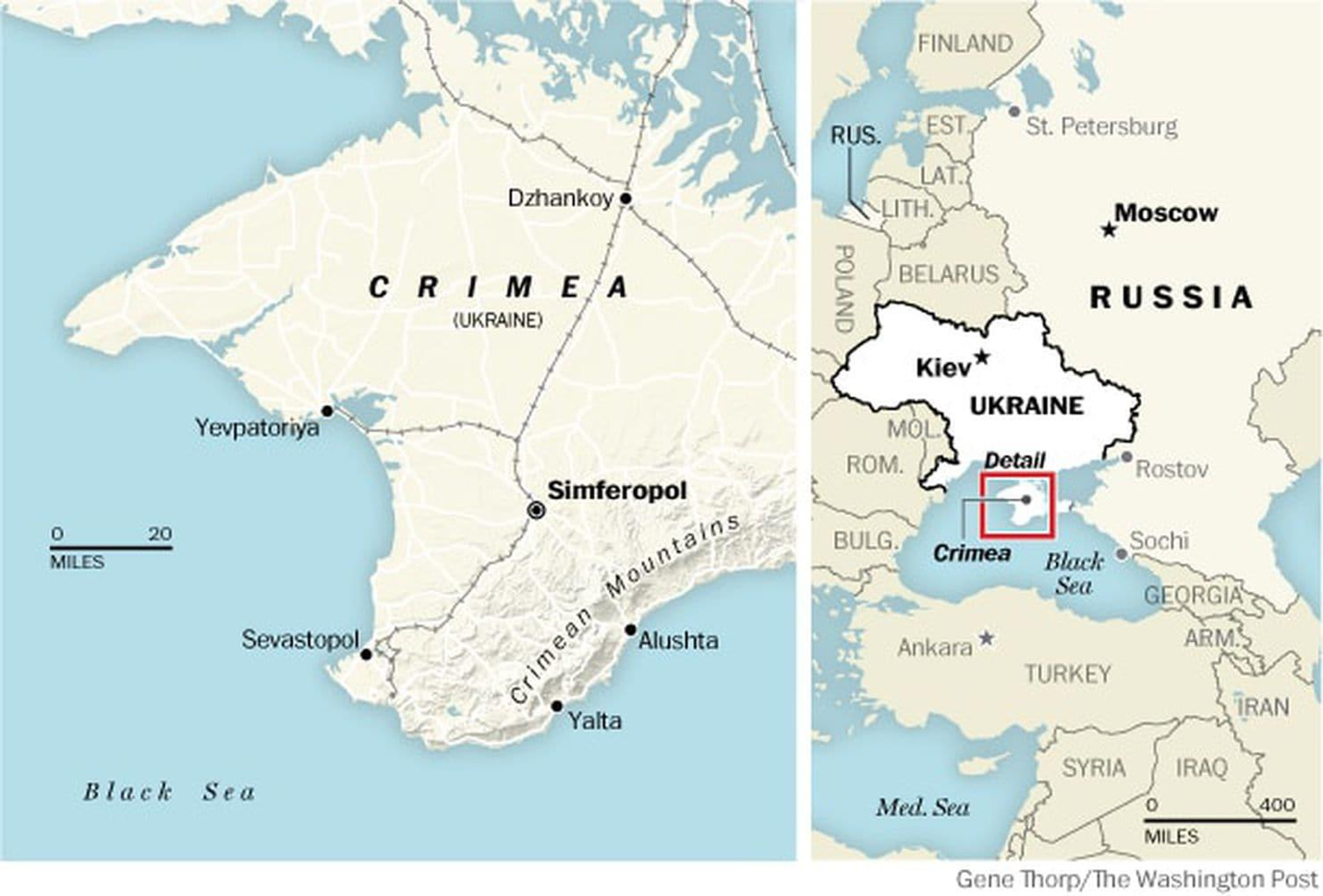
As the Soviet Union was breaking up, Crimeans held a referendum in January of 1991. They voted overwhelmingly (94% in favor) to become the “Autonomous Republic of Crimea” and to separate from Ukraine. There was contention with Kyiv and ultimately it was agreed that Crimea would be autonomous but within Ukraine. There was desire, but not urgency, to secede from Ukraine at this moment.
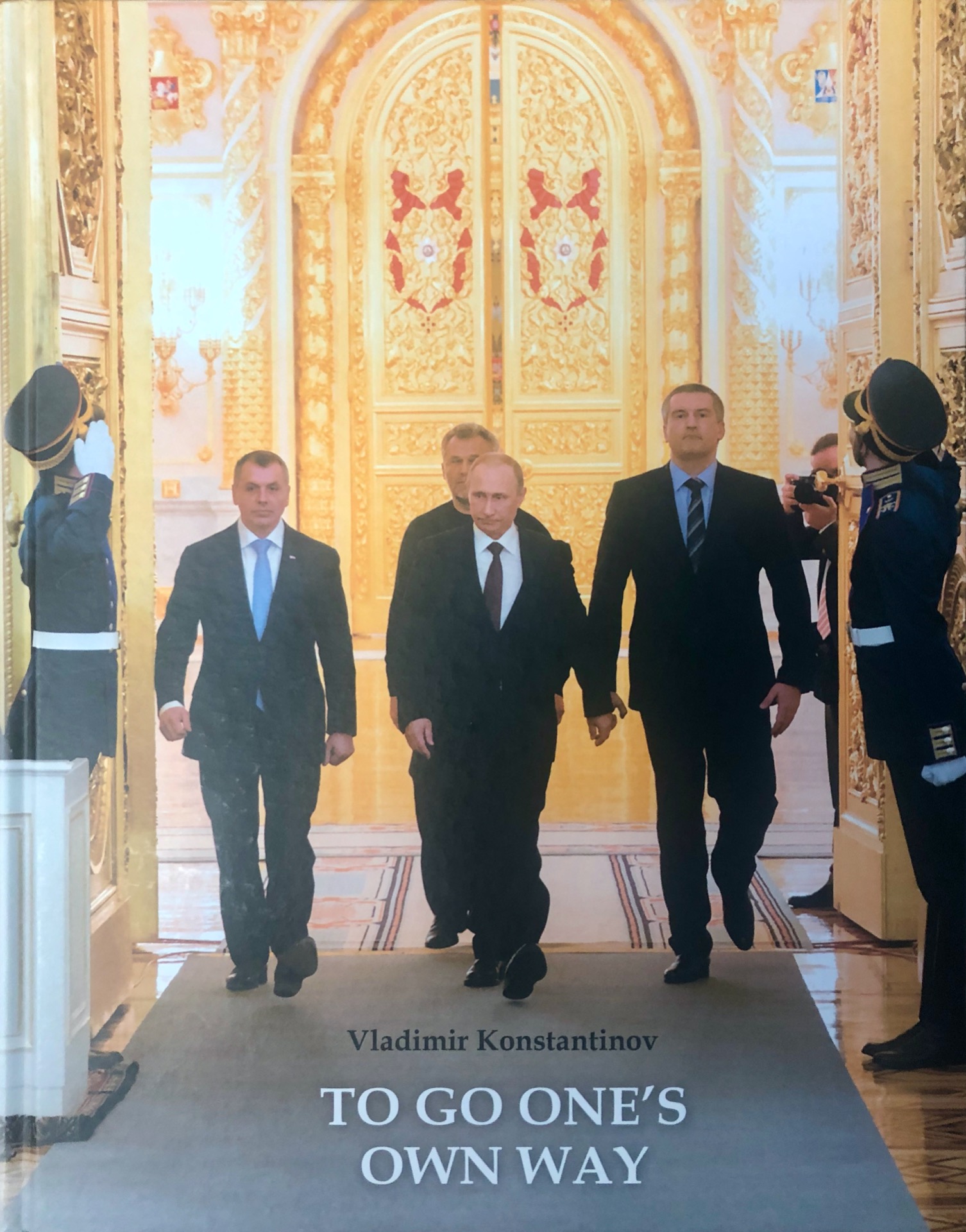
The desire to separate from Ukraine became more urgent in late 2013 and early 2014 as Crimeans watched with alarm as Russophobic ultra-nationalist and neo-Nazi groups increasingly dominated violent protests in Kyiv’s Maidan Square. The book To Go One’s Own Way by Vladimir Konstantinov (2017) documents how the Crimean parliament and presidency issued statements, pleas and warnings about the threat to Ukrainian unity beginning in November 2013.
As we will discuss in an upcoming article, the government of Ukraine reacted to the Crimean referendum to reunite with Russia quite punitively, and it continues to punish the Crimeans for their decision. At the same time, Russia has actively invested in the peninsula and made major improvements in the overall infrastructure there. In light of the foregoing, it is safe to say there are relatively few Crimeans who wish to ever return to Ukraine.

CovertAction Magazine is made possible by subscriptions, orders and donations from readers like you.
Blow the Whistle on U.S. Imperialism
Click the whistle and donate
When you donate to CovertAction Magazine, you are supporting investigative journalism. Your contributions go directly to supporting the development, production, editing, and dissemination of the Magazine.
CovertAction Magazine does not receive corporate or government sponsorship. Yet, we hold a steadfast commitment to providing compensation for writers, editorial and technical support. Your support helps facilitate this compensation as well as increase the caliber of this work.
Please make a donation by clicking on the donate logo above and enter the amount and your credit or debit card information.
CovertAction Institute, Inc. (CAI) is a 501(c)(3) non-profit organization and your gift is tax-deductible for federal income purposes. CAI’s tax-exempt ID number is 87-2461683.
We sincerely thank you for your support.
Disclaimer: The contents of this article are the sole responsibility of the author(s). CovertAction Institute, Inc. (CAI), including its Board of Directors (BD), Editorial Board (EB), Advisory Board (AB), staff, volunteers and its projects (including CovertAction Magazine) are not responsible for any inaccurate or incorrect statement in this article. This article also does not necessarily represent the views the BD, the EB, the AB, staff, volunteers, or any members of its projects.
Differing viewpoints: CAM publishes articles with differing viewpoints in an effort to nurture vibrant debate and thoughtful critical analysis. Feel free to comment on the articles in the comment section and/or send your letters to the Editors, which we will publish in the Letters column.
Copyrighted Material: This web site may contain copyrighted material the use of which has not always been specifically authorized by the copyright owner. As a not-for-profit charitable organization incorporated in the State of New York, we are making such material available in an effort to advance the understanding of humanity’s problems and hopefully to help find solutions for those problems. We believe this constitutes a ‘fair use’ of any such copyrighted material as provided for in section 107 of the US Copyright Law. You can read more about ‘fair use’ and US Copyright Law at the Legal Information Institute of Cornell Law School.
Republishing: CovertAction Magazine (CAM) grants permission to cross-post CAM articles on not-for-profit community internet sites as long as the source is acknowledged together with a hyperlink to the original CovertAction Magazine article. Also, kindly let us know at info@CovertActionMagazine.com. For publication of CAM articles in print or other forms including commercial internet sites, contact: info@CovertActionMagazine.com.
By using this site, you agree to these terms above.
About the Author

Rick Sterling is an investigative journalist based in the San Francisco Bay Area.
He is active with the Taskforce on the Americas and other organizations including Syrian Solidarity Movement and the Mount Diablo Peace and Justice Center.
Rick has researched and written articles challenging the trend toward corporatization of higher education. He is an active supporter of KPFA (listener sponsored radio) and Rossmoor Voices for Justice in Palestine. Rick was a full-time activist in his early years, had a 25-year detour working as an engineer in the electronics and aerospace industries, primarily at UC Berkeley, and has now returned to work full time where his heart is: progressive international causes.
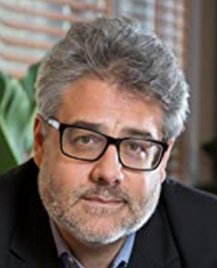 Daniel Kovalik graduated from Columbia University School of Law in 1993. He then served as in-house counsel for the United Steelworkers, AFL-CIO (USW) until 2019.
Daniel Kovalik graduated from Columbia University School of Law in 1993. He then served as in-house counsel for the United Steelworkers, AFL-CIO (USW) until 2019.
While with the USW, he worked on Alien Tort Claims Act cases against The Coca-Cola Company, Drummond and Occidental Petroleum—cases arising out of egregious human rights abuses in Colombia. The Christian Science Monitor, referring to his work defending Colombian unionists under threat of assassination, described Mr. Kovalik as “one of the most prominent defenders of Colombian workers in the United States.” Mr. Kovalik received the David W. Mills Mentoring Fellowship from Stanford University School of Law and was the recipient of the Project Censored Award for his article exposing the unprecedented killing of trade unionists in Colombia.
Dan has written extensively on the issue of international human rights and U.S. foreign policy for the Huffington Post and Counterpunch and has lectured throughout the world on these subjects. He is the author of several books including The Plot To Overthrow Venezuela, How The US Is Orchestrating a Coup for Oil, which includes a Foreword by Oliver Stone.
Daniel can be reached at dkovalik@outlook.com.


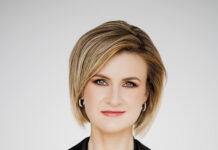
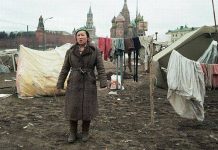
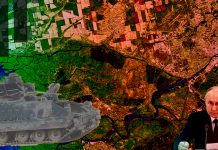
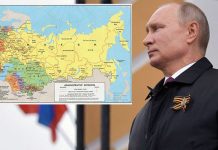
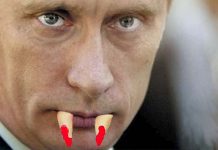
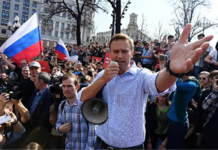



Excellent article. Thank you.